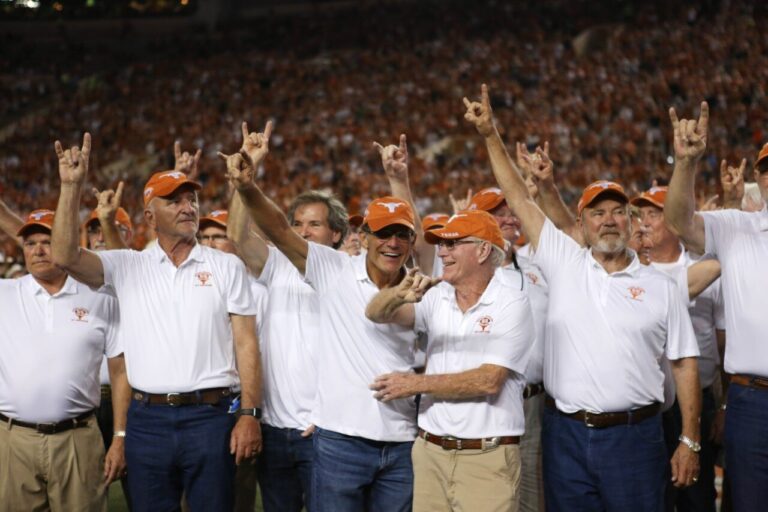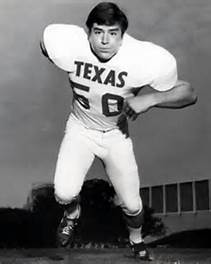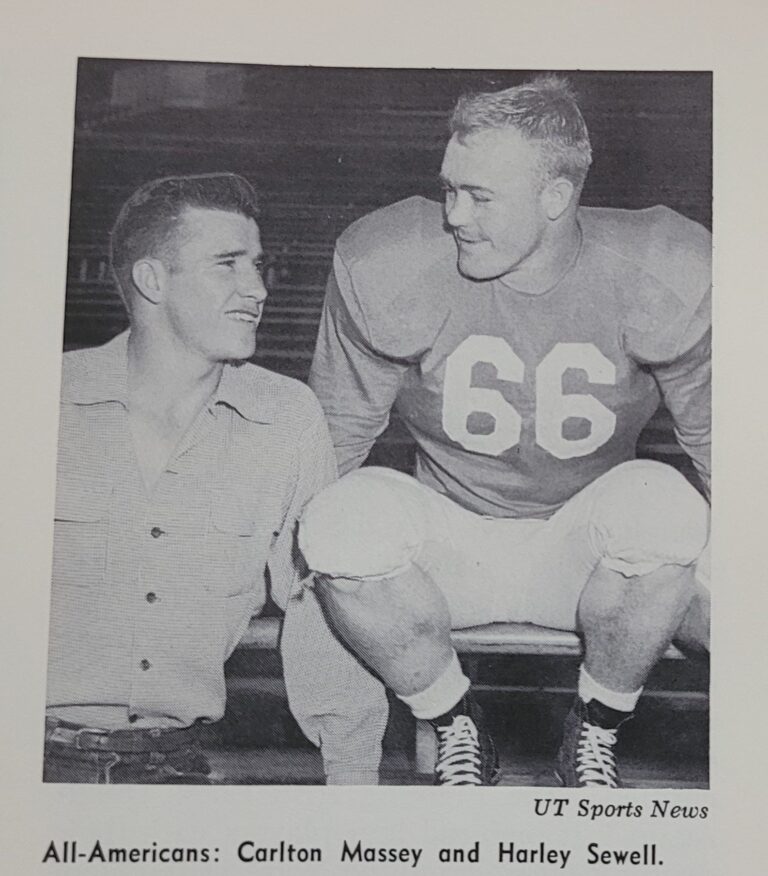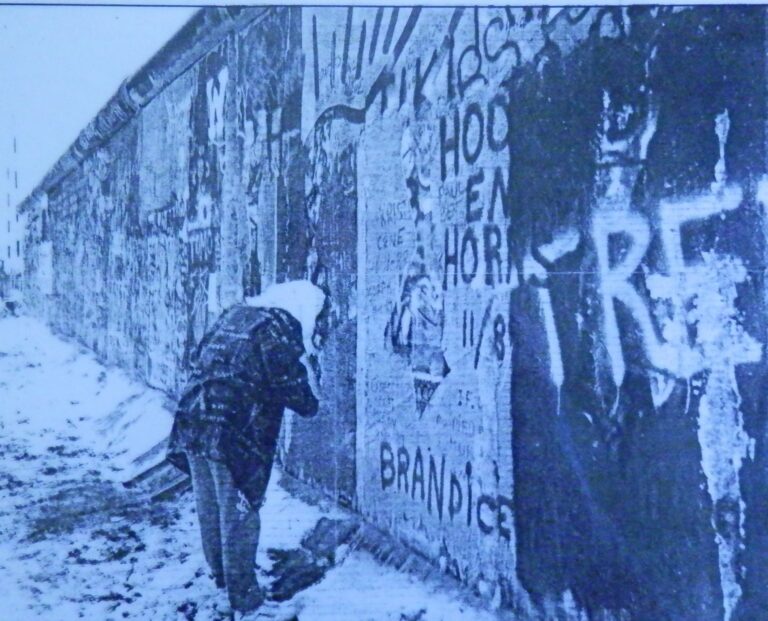Mack Brown saved the Longhorn football brand
Mike Roach wrote a book titled “The Road to Texas.” The book shares how Mack Brown was able to convert young boys from Texas who grew up in the 1990s dreaming of playing for any school but Texas.
In the 1960s, middle and high school boys dreamed of wearing the Longhorn helmet and playing in the SWC. By the late 1980s and for most of the 1990s, many 5-star boys no longer dreamed of wearing the Longhorn helmet and playing in the SWC was to be avoided at all costs.
It was difficult for Mack to convert these athletes to Longhorns, which started well before becoming the Longhorn head coach in 1997. Converting high school 5-star athletes who dreamed of playing for Miami, Florida State, Florida, Washington, and many other programs was a monumental herculean task. But he did it!
The Demise of the SWC was inevitable
The decline of the SWC as a conference with exceptional sports teams started in the 1970s but reached a hyper-sonic state of decline in the late 1980’s. The SWC led the nation in backstabbing, cheating, open pocketbooks, and NCAA infractions. Many professionals, with tongue in cheek, said that a SWC game should start with a burglar alarm. In truth, the SWC got caught more often then other conferences because many of the coaches were sloppy recruiters bragging to others of athletes signed and stupid enough to actually confess to infractions.
Of course, there were other factors that also caused the rifts from competitors in the SWC:
-
Private schools were no longer able to compete financially with state schools;
-
too many Division I teams in one state to support a solid fan base for all Texas Universities;
-
the SWC was too regional in scope for national exposure;
-
The Cotton Bowl’s contractual obligation to feature the SWC winner against another ranked team became an anchor around the Bowl committee’s neck.
-
At best, the SWC teams who played in the Cotton Bowl were mediocre.
If the reasons above are not enough to destroy a conference, then consider this: while the feuds, scandals, NCAA rules infractions and fan apathy were indeed reasons for the death of the Conference
· the official beginning of the end for the SWC can be traced to a 1984 Supreme Court case in which Oklahoma and Georgia won an antitrust case against the NCAA, seizing control of television deals. Market size and TV sets became significant factors for a conference. Not good for the SWC because 90% of its schools were in Texas which hurt its marketability for a big-money TV deal. It was a regional conference in a sport going national.
· Arkansas was the first to see the need to leave the SWC to maximize revenue for the Arkansas program. The SWC paid visiting teams $175,000 per game, which Arkansas said was unfair. Arkansas fans followed the Razorbacks to Rice, SMU, TCU, and…. and helped fill their stadiums but only received $175,000. When Rice came to Arkansas, the Owls brought 400 fans, but the institution still received $175,000.
· Toward the end, attendance had become a significant problem for the league’s smaller schools, with Texas, Texas A&M, and Arkansas subsidizing the rest of the conference teams.
What T.V. sports viewers wanted to watch were the kingmakers, and one of the Kingmakers was Notre Dame, who said, “ Let’s make a Deal”. The Deal exposed the real motivations of academic institutions. Joe Paterno said it best about Notre Dame.
“We got to see Notre Dame go from an academic institution to a banking institution.” The race for the money with T.V. contracts was on. Penn State followed suit and moved to the Big 10 for “economic” reasons, and Arkansas was invited to join the SEC. For some reason, the members of the SWC still did not understand that money was one of the primary driving forces of Arkansas’s decision, not disloyalty. The SWC official’s comments were clueless and knee-jerk, saying “the Iraq of college football “is the SEC. Quite frankly, in hindsight quite shocking that the SWC leaders were so clueless about the new football frontier, and their lack of understanding of the significance of T.V. rights based on viewership led to the decline of the state of Texas football.
The Problems with Texas football were caused by a Lack of hands-on leadership from the decision-makers for the conference. Head in said ostrich-like is a good analogy. The lack of proactive leadership was the major problem that caused this dark period of Longhorn football from 1986-1996, not the coaches. The U.T. and State decision-makers chose not to listen to all the 5-star recruits and their families, who were bored with the SWC and tired of the internal strife caused by infractions. Leadership chose not to make hard decisions to improve the SWC, choosing instead to take the easy way out by blaming Coach Akers, McWilliams, and Mackovic for poor performance. The decision-makers had no clue that the problems were systemic and not coach-related. The decision-makers were so clueless that when Arkansas left the SWC, they accused Arkansas of disloyalty instead of listening to the real reasons.
Instead, they chose to blame poor performance. There was a lack of leadership. Power politics destroyed the SWC and quality sports. It is a condemnation of both leaders. The 1988-1996 years were just as dark as the 2013-2022 years for Longhorn football but for vastly different reasons.
When leadership acknowledged the problem, it was too late for great football from 1986 to 1996.
The first sign of recruiting problems was the recruiting of Blake Brockermeyer.
Blake Brockermeyer -The Reluctant Longhorn.
Blake’s father, Kay, was an offensive lineman for Texas, but his son never intended to sign with Texas. Blake had other visions for his future in college football. UCLA, Florida State, Washington, and…… were his dream schools. As with many high school players in the late 1980s and 1990s, Blake was not impressed with the SWC. A conference composed of Texas schools and Arkansas. He says in the book “The Road to Texas” by Mike Roach, “You know, TCU wasn’t very good, and I didn’t want to stay at home anyway. Texas had not been very good the last few years, and so really, I thought if I wanted to get to play somewhere” else….. It took the influence of strength coach Dana LeDuc, Coach David McWilliams’s charisma, and his parents to convince him to play in the SWC.
B.J. Johnson, Fozzy Whitaker, and Roy Miller never considered visiting Austin but Mack Brown changed their minds.
B.J. Johnson “ I Never Grew Up Wanting To Go To Texas.”
In high school B.J. Johnson decided to leave the state of Texas and sign with a more exciting conference. B.J. says, “Texas was never a school I watched that often.” “Florida State was the school I wanted to attend naturally.” “ I didn’t start loving Texas until I had to go down to a football camp.” When I met Darryl Drake, “That’s kind of what made me start liking Texas and having some interest.”
In 2000, Johnson became the first freshman since 1992 to start as a wide receiver. That year, he broke several freshman receiving records with 41 receptions and 9 receptions for 187 receiving yards. He will always be remembered for the game-winning catch against Texas Tech in 2003.
Even in the early years of the Big 12, many great high school players wanted to play out of the state. When Fozzy Whittaker was in middle school, he was a Miami Hurricanes fan. Fozzy says, “I loved the University of Miami…. especially in the 2000, 2001, and 2002 era.”
But when Ricky Williams had his Heisman run and Cedric Benson joined the Horns, he became more interested in the Texas Longhorns. Fozzy joined the Longhorn Nation in 2007. The 2007 class was ranked 3rd best in the Nation that year.
Roy Miller
Roy Miller did not initially consider the SWC and Big 12. His favorite team was Mack Brown’s North Carolina. He began his recruiting cycle at 15 years old while living in Killen. Although he verbally agreed to play for Baylor and later Oklahoma, those agreements were not binding. After experiencing the family environment built by Mack Brown, Roy signed with Texas in 2005. Coach Mack Brown and Gene Chizik made Miller the top priority in their recruiting class. Coach Mack Brown even visited Killeen Shoemaker High School to greet every single teacher and demonstrate the high importance of their recruitment of Miller. Football being very popular in Texas, Coach Mack Brown was regarded as being more important than even the Governor of Texas. Miller, who is a University of Texas alumni, has had a successful football career, being an All-Conference player, Big 12 Conference champion, Big Twelve Player of the Week, a National Football champion, and The Fiesta Bowl’s most valuable player on defense. He played in 49 games and started in 19 during his Longhorn career.
Roy signed with Colt McCoy, Jamaal Charles, Henry Melton, and other great athletes. Roy attended Texas from 2005 to 2008
Quan Cosby The Road Less Traveled
Quan liked the exciting Auburn and Florida State players Bo Jackson and Deon Sanders. He admits that he only watched one school, Florida State, most of the time. However, everything changed for him when Mack Brown became the coach, and Chis Simms hosted him during his visit to Texas.
In 2001, Cosby was close to signing with Texas and becoming a part of a class that included many future NFL stars. However, he decided to pursue his love for baseball and turned down the scholarship. Money was the driving factor behind his decision. After spending four years in professional baseball, he realized he wanted to return to football and become a scholarship college athlete. At the age of 23, he started over from scratch. Cosby was a part of the 2005 Longhorn recruiting class, alongside great athletes such as Colt, Jamaal Charles, and Henry Melton. Cosby even shared an apartment with Jamaal Charles. A couple of years later, both McCoy and Cosby were breaking records.
In his senior year of 2008, Quan established some remarkable records. He ranked as the second all-time receiver in career receptions with 212, third in career receiving yards at 2,598, and fourth in touchdown receptions with 19. His total of 4,701 all-purpose yards placed him sixth in the annals of Longhorn sports history.
MICHAEL HUFF – A MICHIGAN WOLVERINE TURNED LONGHORN
The Huff family was all Michigan all the time. When Michigan played, the family gathered to support the Wolverines. The family never watched Texas football in Michael’s formative years.
According to the book “The Road to Texas” by Mike Roach, Michael Huff had two scholarship offers for track from the University of Houston and Arkansas and only one football scholarship offer from Purdue. Texas offered a scholarship late in the recruiting process. He visited Texas in December after his last high school football game. Mack Brown offered him a scholarship as a “developmental prospect.” A two-star athlete. Since Michael had few football scholarship offers, he committed immediately. His family was shocked that he received a football instead of a track scholarship.
Michael demonstrated exceptional speed and mental toughness as a Longhorn, starting in 50 out of 51 games. Throughout his career, he achieved numerous milestones, including recording seven interceptions—four of which were returned for touchdowns, setting a school record. In addition, he made 318 tackles, 44 pass breakups, forced six fumbles, and made three recoveries.
Michael wrote the article below for The Players Tribune. The full article is in the link below, and the text has been saved just in case the link is lost. In the USC game, Michael stopped USC’s White short of first down, leading to Texas’s touchdown to win. Michael had double-digit tackles, one important game-changing tackle, and one fumble recovery and was named Defensive Player of the Game.
When Texas plays good football, it seems like the world is a better place.
It’s hard to describe exactly. It’s almost like there’s this warm feeling all throughout campus, Austin, central Texas, and the entire state. There’s a definite buzz of positivity. The grass is greener, everyone is happier and sweet tea just tastes that much sweeter.
You hear plenty of theories around the state about why the Longhorns suddenly stopped winning a few years back. It’s been analyzed and reanalyzed up and down by every person who has an opinion about football. But I think that, ultimately, none of it really matters. I’m not here to discuss what went wrong or whether “Texas is back.”
I want to talk about what this program means to me because it means a lot—just about everything.
In college, things were a lot simpler. It didn’t matter whether you were a five-star blue chip or a two-star guy like myself — everyone was treated the exact same. You slept in the same dorms, ate the same food, and were held to the same standards. The coaches might have made the decisions in terms of scheme and playing time, but it was the guys you lived with — and grew up with — who you really answered to.
When I close my eyes and think back to that time in my life, the first image that pops into my mind is the DB room. Oh man, the hours I spent in that room. I can see Quentin Jammer right there at the front, quietly watching the film. When I was just a redshirt freshman, he was one of the guys I looked up to. He was also the person I never wanted to disappoint.
Fans and the media often focus on (and blame) college coaches, but what is often overlooked is how crucial veteran leadership is to players’ growth.
Edited version of Michael Huff’s years as a Longhorn and beyond.
Duane Akina
Yeah, if I ever screwed up during a game, I knew Duane Akina, our DB coach, we give me an earful. Longhorn player Rod Babers said
Akina was a coaching intellectual.
“Coach Akina was a new-age coach who wanted to mentally and intellectually break us down. As a true teacher, he wanted to find out how we best learned the concepts.”
Huff continues, But during those practices and games, it was guys like Quentin I didn’t really want to let down. If I was supposed to be behind the line before we started a drill, I knew I better make sure I was behind that line, or otherwise, those seniors would be all over me. We all knew what we expected from each other — and that standard led to us producing the best defensive backs in the country for the better part of a decade.
I was a track guy when I first enrolled at Texas in 2001. I liked looking pretty in my uniform and grabbing interceptions. But tackling? That wasn’t for me. I didn’t realize it then, but I was a selfish, one-dimensional player.
Four years later, I was a starter on an undefeated team playing in its second consecutive Rose Bowl. The final play of my career was fourth-and-two, with USC leading us 38-33 late in the fourth quarter. The Trojans were on our 45-yard line, and we needed to prevent them from getting a first down in order to keep our national championship hopes alive. When the ball was snapped, they handed it off to LenDale White, one of the most physical running backs in the country. And with the help of Brian Robison, Tim Crowder, Rod Wright, and the other guys up front doing the dirty work, I got an open shot at LenDale and stopped him just short of the chains.
And I think most college football fans know what happened from there.
That was a play I couldn’t have made when I first arrived in Texas. Not just physically, but I also wouldn’t have had the aggressive attitude and inner fire to do that. That play was possible because of a lot of work that had gone on behind the scenes to mold me as a player and as a person. It was possible because of a mentality ingrained in me that we would not and could not lose.
Over time, I think that edge — that mentality — slowly left our program.
And the biggest reason why I decided to rejoin the Longhorns as a quality control coach last year was to help bring it back.
If you went back to when I was 18 and told me I would be a football coach one day, there’s no chance I would have believed you. To me, football was more of a fun game than a life-long career.
Myself? The younger version of me needed to be pushed and yelled at a bit in order to learn. I remember when we were playing Oklahoma State early in my career, a receiver on their team was talking trash. So, after I broke up a pass in a physical manner, I decided to step on his back a little on my way back to the huddle. But I never made it back to the huddle — Mack Brown pulled me off the field immediately and said, in very clear terms, “If you do something like that one more time, you’ll never play here ever again.”
And that was exactly what I needed. I was involved in a lot of plays throughout my college career, but that particular play is the one that made me feel most embarrassed because I was only thinking about myself. I was happy that I made a play, not that our team had. And that that’s the kind of mentality you can never let exist in a successful program.
As I matured into my junior and senior years, I watched how the guys ahead of me operated. Gradually, the coaches let me take charge and become a leader. I realize now that if I had maintained that selfish attitude when I became a starter—even if I was really good—it would have eventually been passed down to the guys below me. And that’s a problem that can’t be fixed through schemes or techniques—that’s culture.
Hook ‘Em
Michael Huff
AARON WILLIAMS
In Aaron’s youth, a chance meeting with Longhorn weightlifting coach Jeff Madden put him on the path to becoming a Longhorn. At 12 years of age, he was invited to the Longhorn locker room to meet Roy Williams, Cedric Benson, Vince Young, and many others. He was hooked on Texas.
Three-year defensive back who appeared in 37 games, including 23 starts in his last 26 games, at cornerback and on special teams … declared for the NFL Draft as a junior … 2010 Nagurski Trophy and Thorpe Award watch lists … second-team All-Big 12 in 2010 … posted 106 tackles (64 solo), three sacks, 12 TFL, three pressures, four INTs, 24 PBU, six forced fumbles, one fumble recovery and five blocked punts …
Aaron says about defensive back coach Duane Akina. He was a quarterback at Washington , then built the Desert Swarm defense at Arizona before coming to Texas. He was the architect of the DBU (Defensive Back University). Aaron considered going to Auburn to be coached by Will Muschamp, but instead Mack Brown hired Muschamp to come to Texas. Muschamp pushed the players to their limits and made them winners.













